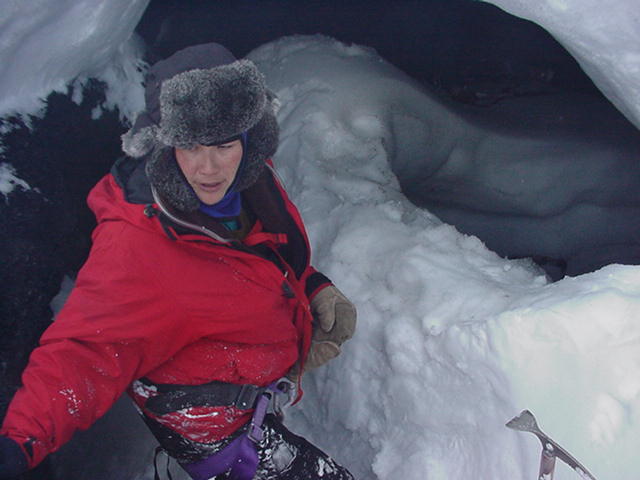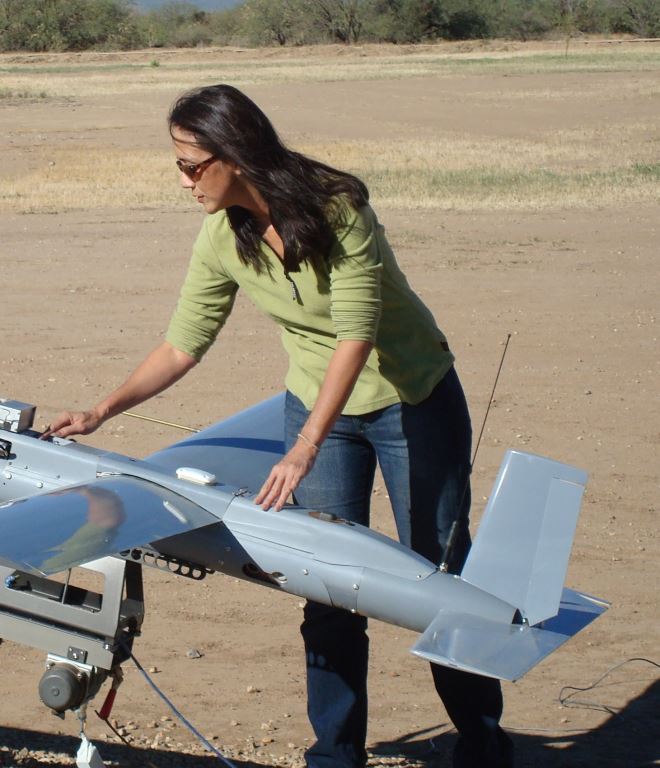Lois Wardell
 Following her career as an environmental engineer that included a season in Antarctica, Lois Wardell began a research career that first concentrated on secondary metabolites from exotic marine species (NASA Exobiology Fellowship, Univ. of Mississippi). However, after falling in love with Antarctica, she ended up doing doctoral work on Mt Erebus, the southern-most active volcano on Earth. She was awarded a DOE Climate Change Education Fellowship for working on the global contribution of CO2 and other gas species from volcanoes while at the New Mexico Institute of Mining and Technology. Her research with volcano geochemistry led her to all seven continents and to some wonderfully remote places. Although Lois hates cold more than anyone she knows, she became fascinated with the polar regions, about life in the extremes, and was awed by the impacts of climate change. As her research interests continued to broaden, she had the chance to contribute to research in areas from atmospheres to sediments.
Following her career as an environmental engineer that included a season in Antarctica, Lois Wardell began a research career that first concentrated on secondary metabolites from exotic marine species (NASA Exobiology Fellowship, Univ. of Mississippi). However, after falling in love with Antarctica, she ended up doing doctoral work on Mt Erebus, the southern-most active volcano on Earth. She was awarded a DOE Climate Change Education Fellowship for working on the global contribution of CO2 and other gas species from volcanoes while at the New Mexico Institute of Mining and Technology. Her research with volcano geochemistry led her to all seven continents and to some wonderfully remote places. Although Lois hates cold more than anyone she knows, she became fascinated with the polar regions, about life in the extremes, and was awed by the impacts of climate change. As her research interests continued to broaden, she had the chance to contribute to research in areas from atmospheres to sediments.
 For her current work, Lois became involved in the development of unmanned aerial systems (UAS or Drones) thanks to her doctoral research that included airborne measurements of active volcanoes and her postdoc (NERC Postdoctoral Fellow, McGill University) that focused more on remote sensing and sensor development. Her projects have included flying hyperspectral sensors in Greenland to measure the volume of supra-glacial meltpools and managing UAS on the MAC Campaign for Scripps, which required the air vehicles to fly in a precise vertical formation to measure above, inside, and below a pollution cloud as it moved over the Maldives. Working in technology innovation gives Lois the chance to participate in many fields of Earth Science. In addition to her work with unmanned aerial systems, some of her side projects included assisting ESWN member Dr. Charlotte Rowe, as she introduced the new area of phyto-seismoacoustics; Dr. Linda Powers with the quantification of viable-but-not-culturable microbes with her handheld sensor; and Dr. Bill Morrow in the development of the disinfection system for the downhole cable unit of the WISSARD ice drill that achieved the first collection of organisms from an Antarctic subglacial lake. Lois was recognized by the Arizona Business Magazine as one to the state’s Top 13 Women Innovators of 2013.
For her current work, Lois became involved in the development of unmanned aerial systems (UAS or Drones) thanks to her doctoral research that included airborne measurements of active volcanoes and her postdoc (NERC Postdoctoral Fellow, McGill University) that focused more on remote sensing and sensor development. Her projects have included flying hyperspectral sensors in Greenland to measure the volume of supra-glacial meltpools and managing UAS on the MAC Campaign for Scripps, which required the air vehicles to fly in a precise vertical formation to measure above, inside, and below a pollution cloud as it moved over the Maldives. Working in technology innovation gives Lois the chance to participate in many fields of Earth Science. In addition to her work with unmanned aerial systems, some of her side projects included assisting ESWN member Dr. Charlotte Rowe, as she introduced the new area of phyto-seismoacoustics; Dr. Linda Powers with the quantification of viable-but-not-culturable microbes with her handheld sensor; and Dr. Bill Morrow in the development of the disinfection system for the downhole cable unit of the WISSARD ice drill that achieved the first collection of organisms from an Antarctic subglacial lake. Lois was recognized by the Arizona Business Magazine as one to the state’s Top 13 Women Innovators of 2013.
Lois has been a member of ESWN since its early days and has benefitted from the network as well as its support in encouraging leadership roles for women scientists. Lois found the 2012 ESWN Career Workshop to be “a great opportunity to network with some amazing researchers and to work on my communication skills. Thank you ESWN!” Being active in STEM outreach is important to Lois and she has served as a mentor for minority organizations such as MS PHDS and SACNAS, and formerly served as a Chair for the Committee for Women and Minorities in the Geosciences for the GSA.

